Bertram Taetz
MinJointTracker: Real-time inertial kinematic chain tracking with joint position estimation and minimal state size
Sep 15, 2025Abstract:Inertial motion capture is a promising approach for capturing motion outside the laboratory. However, as one major drawback, most of the current methods require different quantities to be calibrated or computed offline as part of the setup process, such as segment lengths, relative orientations between inertial measurement units (IMUs) and segment coordinate frames (IMU-to-segment calibrations) or the joint positions in the IMU frames. This renders the setup process inconvenient. This work contributes to real-time capable calibration-free inertial tracking of a kinematic chain, i.e. simultaneous recursive Bayesian estimation of global IMU angular kinematics and joint positions in the IMU frames, with a minimal state size. Experimental results on simulated IMU data from a three-link kinematic chain (manipulator study) as well as re-simulated IMU data from healthy humans walking (lower body study) show that the calibration-free and lightweight algorithm provides not only drift-free relative but also drift-free absolute orientation estimates with a global heading reference for only one IMU as well as robust and fast convergence of joint position estimates in the different movement scenarios.
Autoencoder for Synthetic to Real Generalization: From Simple to More Complex Scenes
Apr 01, 2022

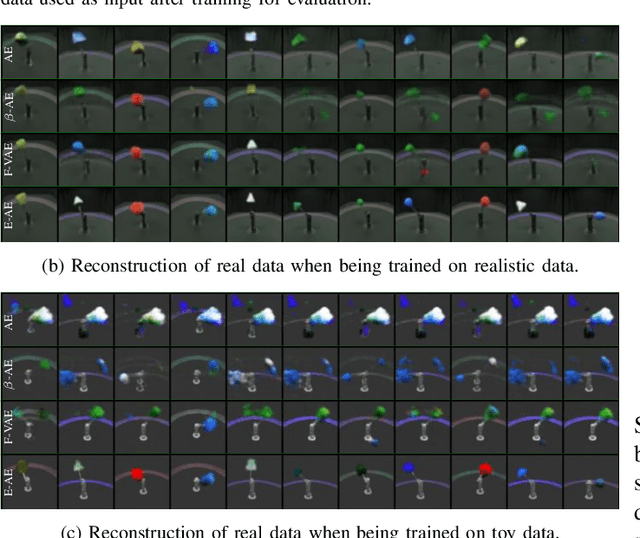
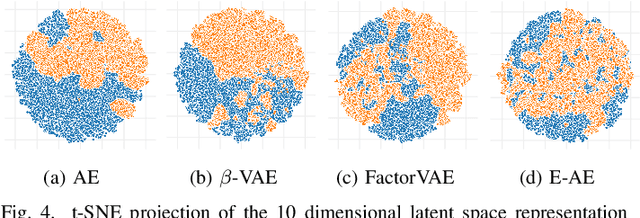
Abstract:Learning on synthetic data and transferring the resulting properties to their real counterparts is an important challenge for reducing costs and increasing safety in machine learning. In this work, we focus on autoencoder architectures and aim at learning latent space representations that are invariant to inductive biases caused by the domain shift between simulated and real images showing the same scenario. We train on synthetic images only, present approaches to increase generalizability and improve the preservation of the semantics to real datasets of increasing visual complexity. We show that pre-trained feature extractors (e.g. VGG) can be sufficient for generalization on images of lower complexity, but additional improvements are required for visually more complex scenes. To this end, we demonstrate a new sampling technique, which matches semantically important parts of the image, while randomizing the other parts, leads to salient feature extraction and a neglection of unimportant parts. This helps the generalization to real data and we further show that our approach outperforms fine-tuned classification models.
Autoencoder Attractors for Uncertainty Estimation
Apr 01, 2022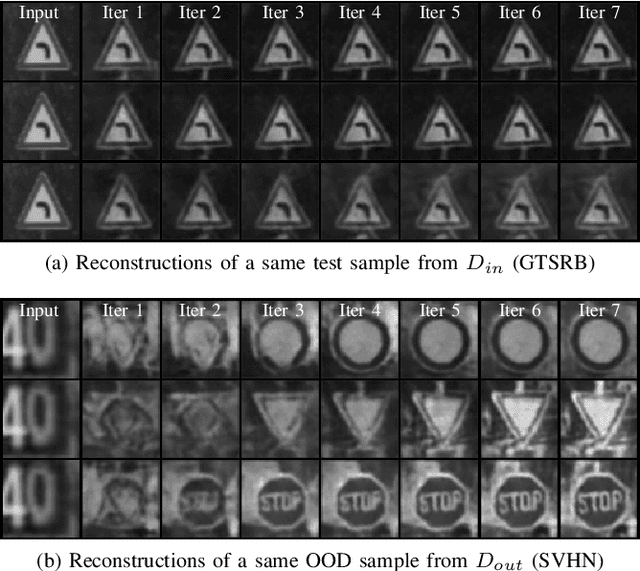



Abstract:The reliability assessment of a machine learning model's prediction is an important quantity for the deployment in safety critical applications. Not only can it be used to detect novel sceneries, either as out-of-distribution or anomaly sample, but it also helps to determine deficiencies in the training data distribution. A lot of promising research directions have either proposed traditional methods like Gaussian processes or extended deep learning based approaches, for example, by interpreting them from a Bayesian point of view. In this work we propose a novel approach for uncertainty estimation based on autoencoder models: The recursive application of a previously trained autoencoder model can be interpreted as a dynamical system storing training examples as attractors. While input images close to known samples will converge to the same or similar attractor, input samples containing unknown features are unstable and converge to different training samples by potentially removing or changing characteristic features. The use of dropout during training and inference leads to a family of similar dynamical systems, each one being robust on samples close to the training distribution but unstable on new features. Either the model reliably removes these features or the resulting instability can be exploited to detect problematic input samples. We evaluate our approach on several dataset combinations as well as on an industrial application for occupant classification in the vehicle interior for which we additionally release a new synthetic dataset.
Autoencoder Based Inter-Vehicle Generalization for In-Cabin Occupant Classification
May 07, 2021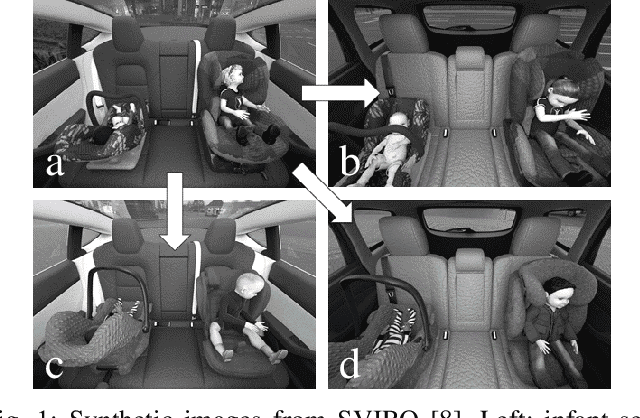

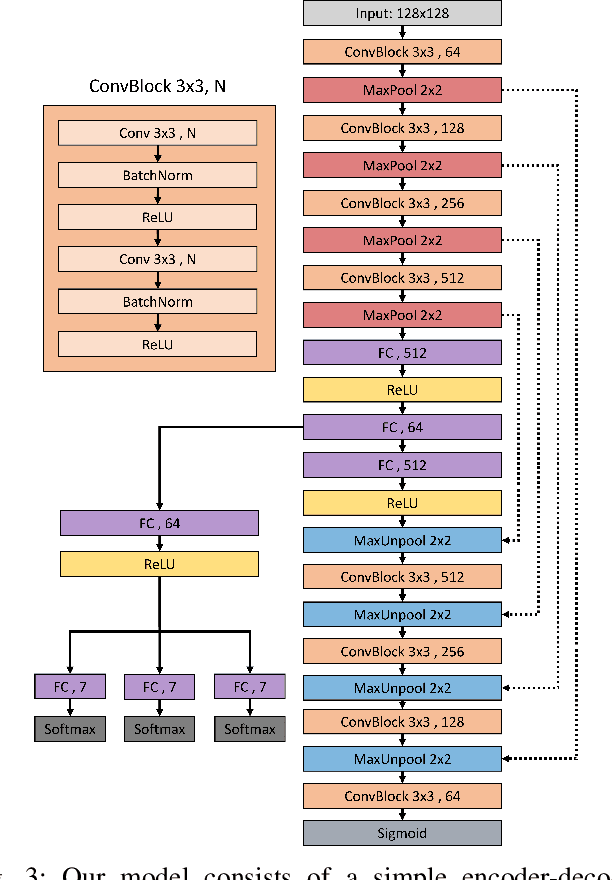
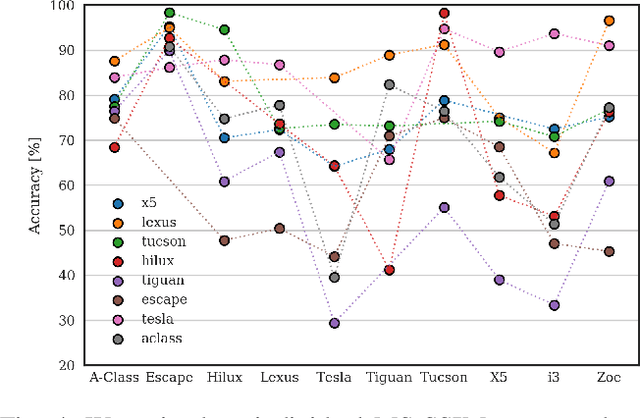
Abstract:Common domain shift problem formulations consider the integration of multiple source domains, or the target domain during training. Regarding the generalization of machine learning models between different car interiors, we formulate the criterion of training in a single vehicle: without access to the target distribution of the vehicle the model would be deployed to, neither with access to multiple vehicles during training. We performed an investigation on the SVIRO dataset for occupant classification on the rear bench and propose an autoencoder based approach to improve the transferability. The autoencoder is on par with commonly used classification models when trained from scratch and sometimes out-performs models pre-trained on a large amount of data. Moreover, the autoencoder can transform images from unknown vehicles into the vehicle it was trained on. These results are corroborated by an evaluation on real infrared images from two vehicle interiors.
Illumination Normalization by Partially Impossible Encoder-Decoder Cost Function
Nov 09, 2020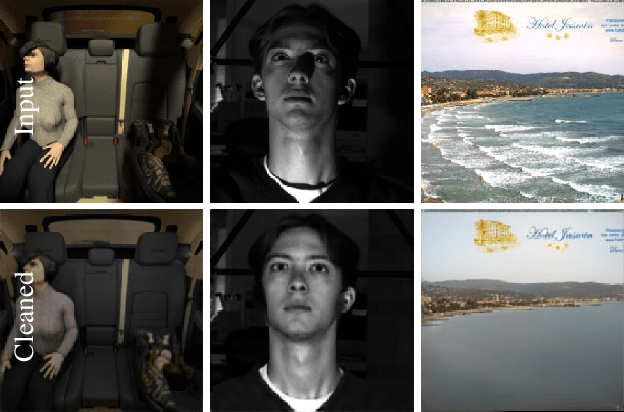
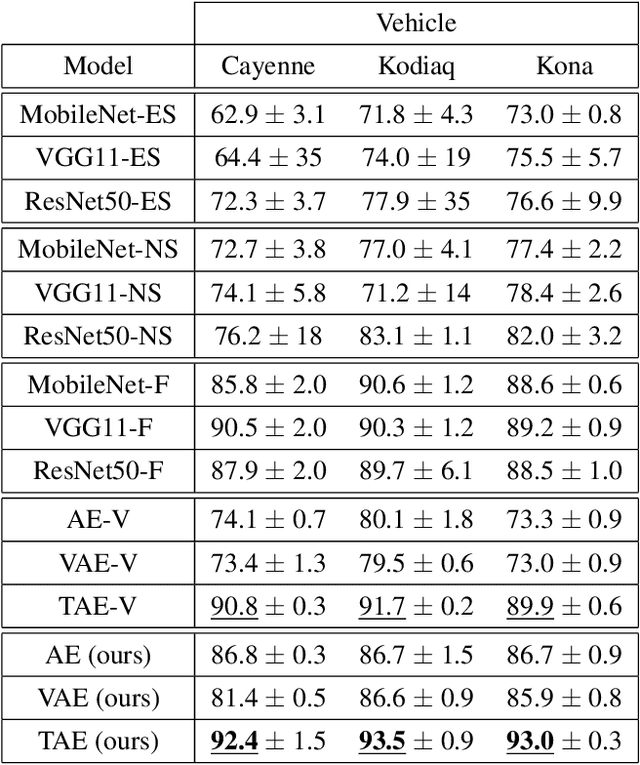
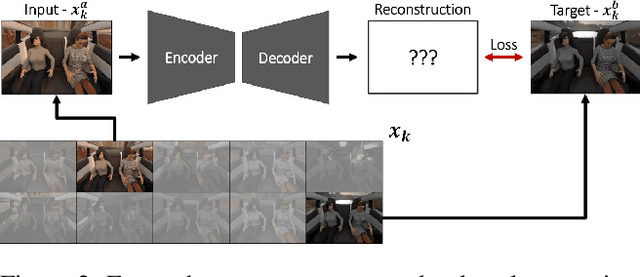

Abstract:Images recorded during the lifetime of computer vision based systems undergo a wide range of illumination and environmental conditions affecting the reliability of previously trained machine learning models. Image normalization is hence a valuable preprocessing component to enhance the models' robustness. To this end, we introduce a new strategy for the cost function formulation of encoder-decoder networks to average out all the unimportant information in the input images (e.g. environmental features and illumination changes) to focus on the reconstruction of the salient features (e.g. class instances). Our method exploits the availability of identical sceneries under different illumination and environmental conditions for which we formulate a partially impossible reconstruction target: the input image will not convey enough information to reconstruct the target in its entirety. Its applicability is assessed on three publicly available datasets. We combine the triplet loss as a regularizer in the latent space representation and a nearest neighbour search to improve the generalization to unseen illuminations and class instances. The importance of the aforementioned post-processing is highlighted on an automotive application. To this end, we release a synthetic dataset of sceneries from three different passenger compartments where each scenery is rendered under ten different illumination and environmental conditions: see https://sviro.kl.dfki.de
Flow Fields: Dense Correspondence Fields for Highly Accurate Large Displacement Optical Flow Estimation
Oct 28, 2018



Abstract:Modern large displacement optical flow algorithms usually use an initialization by either sparse descriptor matching techniques or dense approximate nearest neighbor fields. While the latter have the advantage of being dense, they have the major disadvantage of being very outlier-prone as they are not designed to find the optical flow, but the visually most similar correspondence. In this article we present a dense correspondence field approach that is much less outlier-prone and thus much better suited for optical flow estimation than approximate nearest neighbor fields. Our approach does not require explicit regularization, smoothing (like median filtering) or a new data term. Instead we solely rely on patch matching techniques and a novel multi-scale matching strategy. We also present enhancements for outlier filtering. We show that our approach is better suited for large displacement optical flow estimation than modern descriptor matching techniques. We do so by initializing EpicFlow with our approach instead of their originally used state-of-the-art descriptor matching technique. We significantly outperform the original EpicFlow on MPI-Sintel, KITTI 2012, KITTI 2015 and Middlebury. In this extended article of our former conference publication we further improve our approach in matching accuracy as well as runtime and present more experiments and insights.
Towards Self-Calibrating Inertial Body Motion Capture
Jun 12, 2016



Abstract:This paper presents a novel online capable method for simultaneous estimation of human motion in terms of segment orientations and positions along with sensor-to-segment calibration parameters from inertial sensors attached to the body. In order to solve this ill-posed estimation problem, state-of-the-art motion, measurement and biomechanical models are combined with new stochastic equations and priors. These are based on the kinematics of multi-body systems, anatomical and body shape information, as well as, parameter properties for regularisation. This leads to a constrained weighted least squares problem that is solved in a sliding window fashion. Magnetometer information is currently only used for initialisation, while the estimation itself works without magnetometers. The method was tested on simulated, as well as, on real data, captured from a lower body configuration.
 Add to Chrome
Add to Chrome Add to Firefox
Add to Firefox Add to Edge
Add to Edge